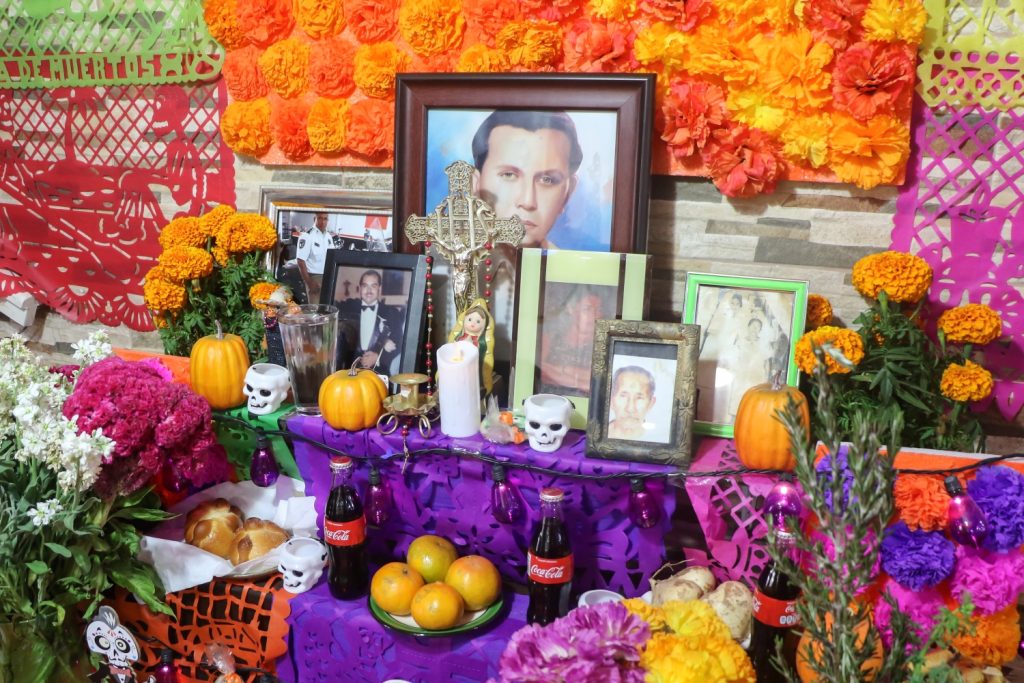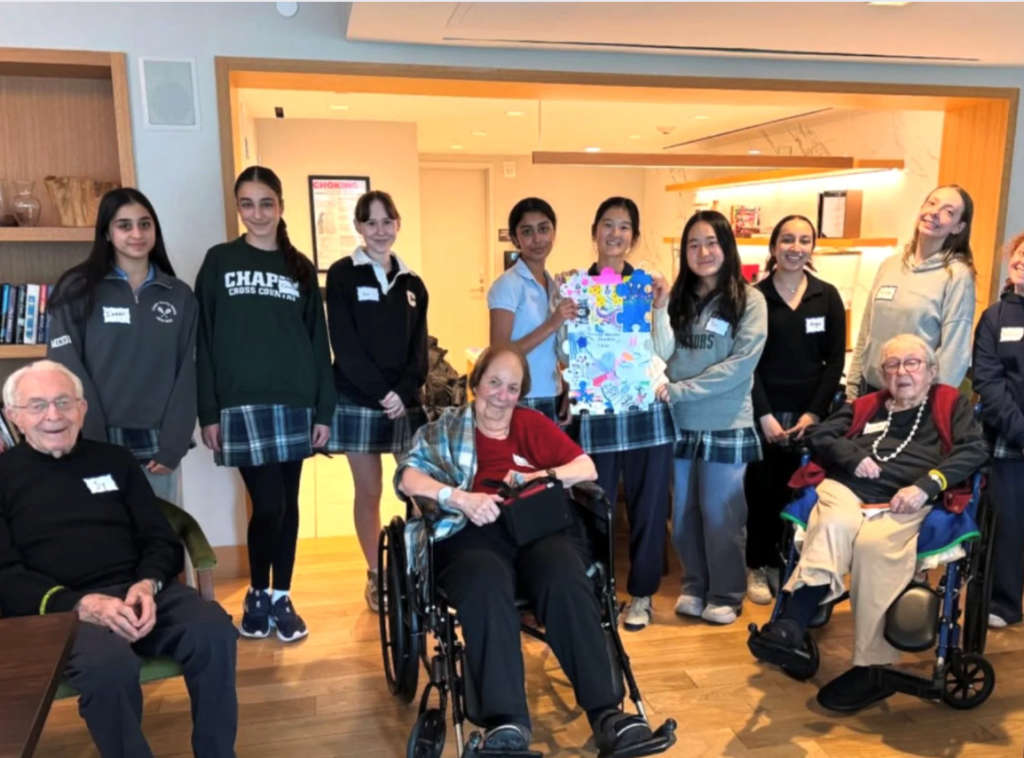Editor’s Note: The John A. Hartford Foundation is collaborating with ASA to advance equity in aging by supporting ASA RISE, a 20-week social justice and leadership program for rising leaders of color in aging, and via the development and dissemination of equity-related, partnership-based thought leadership through ASA’s Generations platform. This blog post is part of that series.
A few months ago, I completed the ASA RISE Program and was invited to share my perspective on the intersection of aging and immigration. This subject is more than professional for me—it is deeply personal. I am an immigrant, the daughter of immigrants who came to the United States in their 40s. They arrived in 1996, and although I have now lived here longer than in my country of birth, I hold tightly to the phrase: No quiero olvidar de donde he venido, which in English translates to: I do not want to forget where I’ve come from. These words ground me in my values, remind me of my journey, and keep me connected to the sacrifices that shaped my life.
My work with immigrant communities began when I moved to Colorado in 2004 to start a nonprofit dedicated to supporting the Hispanic community with spiritual growth, resources, and services. At that time, my husband and I found ourselves taking on many roles due to a lack of Spanish-language services. We became, in turns, paralegals, social workers, financial advisors, mentors and counselors to the families who came to us for help.
Fifteen years later, I stepped into what I consider my dream job: working for an Area Agency on Aging. I was hired as a bilingual case manager for the Aging and Disability Resource Center (ADRC) team at the Larimer County Office on Aging, focusing on serving low-income, immigrant, BIPOC, and other marginalized older adults. Over time, I saw clearly how these groups lacked access to even the most basic supports that many older Americans take for granted.
The Melting Pot: A Soup of Many Flavors
When we talk about immigrants, each of us may imagine different faces, accents and backgrounds. When I first arrived in the United States I often heard the phrase, “Welcome to the melting pot.” Later, I realized it meant a coming together of diverse people—different ethnicities, languages, and cultures—forming something new.
‘When Social Security was established agricultural and domestic workers—jobs often held by immigrants—were intentionally excluded.’
To me, it was like making soup in autumn: potatoes, carrots, cilantro, chicken, spices. Each ingredient retains its flavor, but together they create something nourishing, fragrant, and whole. In the same way, this nation’s richness lies in its diversity.
Immigrant communities also encompass a wide spectrum: farmworkers, construction workers, teachers, business owners and professionals with advanced degrees. Regardless of their background, they represent a hardworking force that strengthens the nation.
The Work of Advocacy
Working at the Office on Aging has given me the privilege of supporting some of the most vulnerable older adults—those who often feel forgotten or unseen. At the ADRC, we provide information and referral services for older adults, people living with disabilities, caregivers and families. My work has focused on helping people with limited English proficiency, low incomes or no insurance, and those living under the shadow of undocumented migration.
One story stays with me: A client of mine, already gravely ill with a chronic disease, was taken into custody by an immigration enforcement agency. His wife had passed away during the pandemic, and his daughter had been supporting him financially, while also coping with the recent loss of her brother. Within five years, she had lost her mother, her brother, and now her father was detained while terminally ill. I could not stop thinking: How will he survive? Stories like this remind me why advocacy for equity and social justice is so urgently needed.
The ASA RISE program strengthened my resolve to continue this work. As a member of the fourth cohort—The Accelerators—I was surrounded by colleagues who shared my passion, and many identified as immigrants, BIPOC or members of other marginalized communities. Together we shared not only professional insights but also the personal barriers we had overcome. Mentorship was a key part of the program, and I had the privilege of working with Cristina Diaz of AgeOptions in Chicago.
Through our conversations, Cristina helped me see more clearly the historical inequities facing older immigrant adults. She reminded me that when Social Security was established agricultural and domestic workers—jobs often held by immigrants—were intentionally excluded. As a result, many older immigrants who worked in the United States for decades still lack access to retirement benefits today.
‘ “Immigrants are America’s ghostwriters.” They are essential to the nation’s story, yet remain invisible in so many ways.’
The clients I work with reflect these realities. One older adult, a retired teacher from Latin America with more than 30 years of service, receives just $200 a month in pension. They had moved to the United States to live with their family, joining a growing number of older parents who migrate later in life.
In the past, older adults often resisted leaving their home countries, reluctant to lose their culture, neighborhoods, and social networks. But now, many parents are making the bold choice to migrate for the chance to be near their children and grandchildren. As my mother-in-law often says: “My grandchildren are my life—they are my vitamin F.”
Yet the reality is that many of these older adults face systemic inequities. Without pensions or Social Security, they depend heavily upon family support. Their contributions—decades of labor in agriculture, construction, caregiving, and domestic work—are rarely recognized. As Cristina emphasized, “Immigrants are America’s ghostwriters.” They are essential to the nation’s story, yet remain invisible in so many ways.
Claiming My Voice
ASA RISE gave me not only a stronger network but also the courage to claim my voice. At first, I struggled with imposter syndrome, wondering if I belonged among such educated, well-spoken colleagues. But as we supported one another, I realized that my lived experience and my advocacy for vulnerable older adults are exactly what I bring to the table. My story—and the stories of my clients—matter.
I am grateful for the community I found through ASA RISE, for my mentor, and for my colleagues who inspire me every day. Most of all, I am grateful for the chance to lift the voices of those who may feel forgotten, unseen or silenced. Their stories are the heart of my work, and they remind me every day why advocacy matters.
Carolina Quiñonez is a bilingual case manager in the ADRC team with the Larimer County Office on Aging, focusing on immigrant, BIPOC and low-income older adults. She is a graduate of ASA RISE’s fourth cohort, “The Accelerators,” and works to advance equity and social justice in aging through advocacy, mentorship, and community engagement in Colorado.
Photo caption: Carolina Quiñonez, at right, dressed as a Spaniard, pictured with her mother and sister, dressed as a Native American Indian, taken in her country of origin.
Photo credit: Courtesy Carolina Quiñonez













